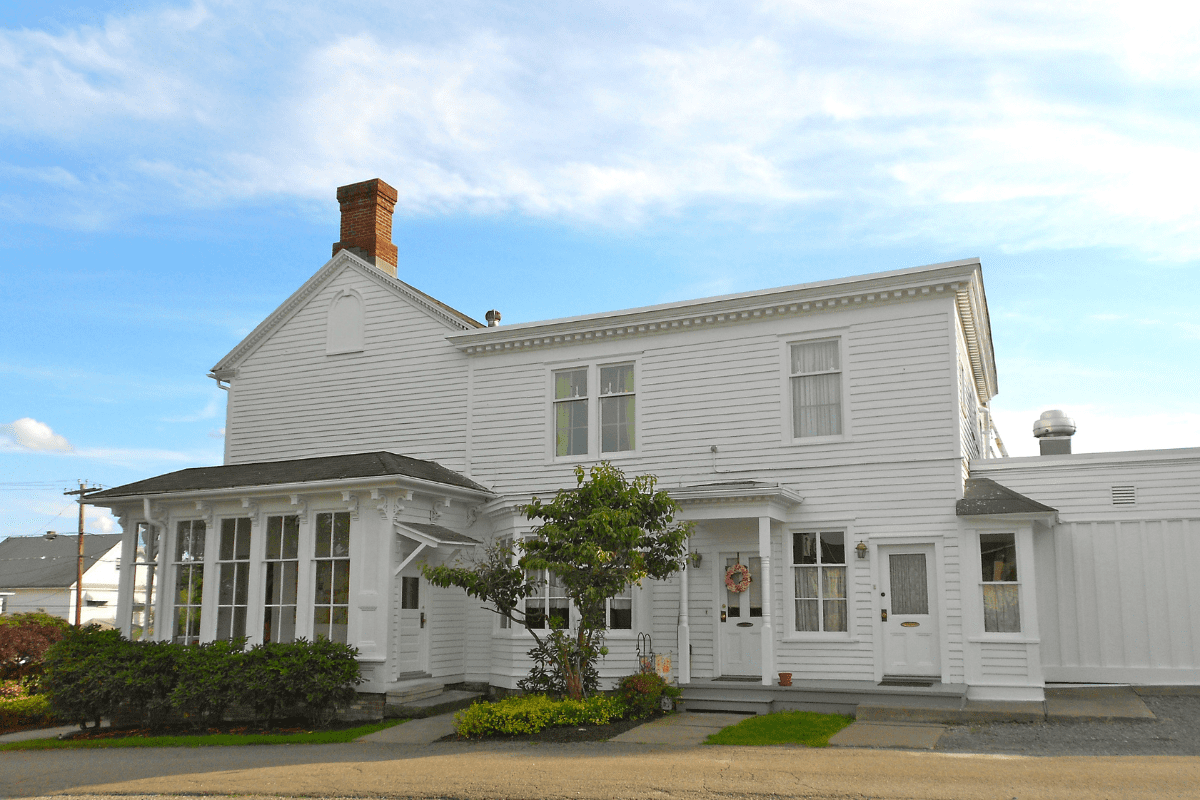
Throughout Northeastern Pennsylvania, you’ll find structures from the 18th century that represent historic links to the earliest immigrant settlers in the region.
Before the United States was even formed, people were living and building homes and businesses in Northeastern Pennsylvania. The first people to live in the region were Native Americans, but as they were pushed from their lands by European settlers, unfortunately no early Native American buildings remain. So the earliest extant buildings in the region were constructed by immigrant settlers who moved into what we now refer to colloquially as NEPA during the 18th century.
Some of these buildings are still standing, and have been transformed into museums and cultural programming spaces that are open to visitors. Other buildings you can admire from afar. Here are eight buildings you can visit that represent centuries of NEPA history.
Quiet Valley Living Historical Farm – Stroudsburg
Just south of Stroudsburg, a living history museum showcases the lives of humble German immigrant farmers during the 19th century. Quiet Valley Living Historical Farm actually dates to around 1765, when the Depper family immigrated to the US and built a farm that remained in the family until 1913. The museum opened in 1963 after new owners realized the historical significance of the site; little had changed to the buildings since they were used on the farm in the late 1700s and throughout the 1800s. At Quiet Valley Farm, you can tour part of the main farmhouse, which was originally a one-story log house built circa 1765. A second floor and a larger kitchen were added during the 19th century. The spring house was built around the same time as the original house, and the back barn was built in the 1850s. Quiet Valley offers seasonal tours, festivals, and events throughout the year so that you can understand, up close, what farm life was like for our Pennsylvania predecessors.
Nathan Denison House – Forty Fort
The oldest house in Luzerne County is the Nathan Denison House, which was built in 1790. Denison himself was one of the 40 original settlers to found Forty Fort (a fact which should clue you in to the history of this funny town name). Denison built his house in the New England style, a design style not often found among Pennsylvania homes. It’s now owned by the Luzerne County Historical Society and has been restored to resemble what it looked like back in 1790. You can visit and explore the Denison House when the society hosts summer tours or other events throughout the year.

Photo courtesy of Aaron Smith
The Old Mill and the Fenner, Snyder & Robacker Homestead – Sciota
In Sciota, west of Stroudsburg, stands an old grist mill that was originally built in the 1700s, perhaps as early as 1729. The Old Mill sits along McMichael Creek and was first made of logs before it was rebuilt with stone in 1800. It’s located across the street from the Fenner, Snyder & Robacker Homestead, a manor originally built in 1805. Indeed, the mill was bought by the Fenners in the late 1700s. You can visit the Homestead and mill when Hamilton Township hosts community programming and open houses at the historic sites. Note that the Old Mill was damaged by storms and flooding in 2019 and 2020, but is being restored so it can be enjoyed for a few more centuries.

Photo courtesy of Nicholas Tonelli
Callahan House and Peters House – Milford and Bushkill
The beautiful Delaware Water Gap National Recreation Area encompasses 70,000 acres, so it’s no surprise that the area is home to dozens of historic properties. Two of these properties, the Callahan House and the Peters House, are located within the national recreation area south of Milford. The Callahan House is just a few minutes south of the town while the Peters House is a little more than 20 minutes away in Bushkill. The Callahan House was first built in the late 1800s and is thought to have served as a stop on the Underground Railroad that assisted escaped slaves on their journeys to freedom. The Peters House was owned by the Peters family, a prominent family in Pike County who first opened Bushkill Falls as a tourist attraction. The original section of the Peters House was built in 1746, though much was added to it in the ensuing centuries. You can see both of these houses at the same time you explore the national recreation area, including perhaps nearby Dingmans Falls or Bushkill Falls.
The Oldest House – Laceyville
The historic home dubbed the Oldest House is located in the Endless Mountains in Wyoming County. The house, which is nestled along the Susquehanna River, was built as early as 1780. And as the area around the home developed, the house was soon found along a bustling main street. It switched owners for a couple of centuries, but many of the original features remain, like some ironwork and multiple fireplaces. Now owned by the Laceyville Area Historical Society, the house operates as a museum and is open for seasonal tours and community events.
The Tripp House – Scranton
The oldest house in Lackawanna County is Scranton’s Tripp House. Isaac Tripp, the first settler in the Lackawanna Valley, built a temporary house on land he purchased in 1771. His son built what is now the Tripp House nearby in 1778. The house saw further expansion over the next several generations, as the Tripp family owned and lived in the home until 1900. Today, the federal-style structure has been restored to what it looked like in 1812, with interior Victorian-era decorations. Large and elegant, the Tripp House is often rented for special events like weddings, showers, and other parties.

Discover Tai Chi with free classes at Andorra Library
Join weekly Tai Chi classes at Andorra Library Philadelphia! Learn ancient Chinese wellness through mindful movement, breathing and meditation....

Enjoy summer in Pittsburgh: Free events you can’t miss this July
Enjoy Pittsburgh this July with free events, with Anthrocon’s fursuit parade, Picklesburgh’s giant pickle balloon, concerts, festivals, and more!...

LL Cool J says he won’t perform at Philadelphia’s July Fourth festival in support of workers strike
Rapper LL Cool J and R&B singer Jazmine Sullivan say they will not perform at a Fourth of July festival in Philadelphia in support of a...

“Go Birds” exhibition: Interactive bird watching at Philly Library
Explore “Go Birds” at Philadelphia’s Parkway Central Library! Interactive bird exhibition with backpack rentals, guided walks, and more, June 2-Aug...

Stunning small-town Fourth of July fireworks shows across Pa.
These small Pennsylvania towns host Fourth of July fireworks displays that are anything but small. Sure, you know about expensive big city...





